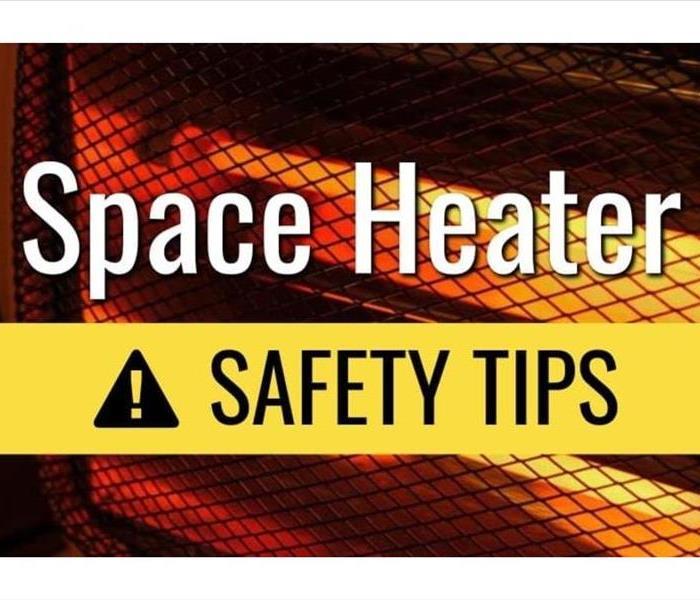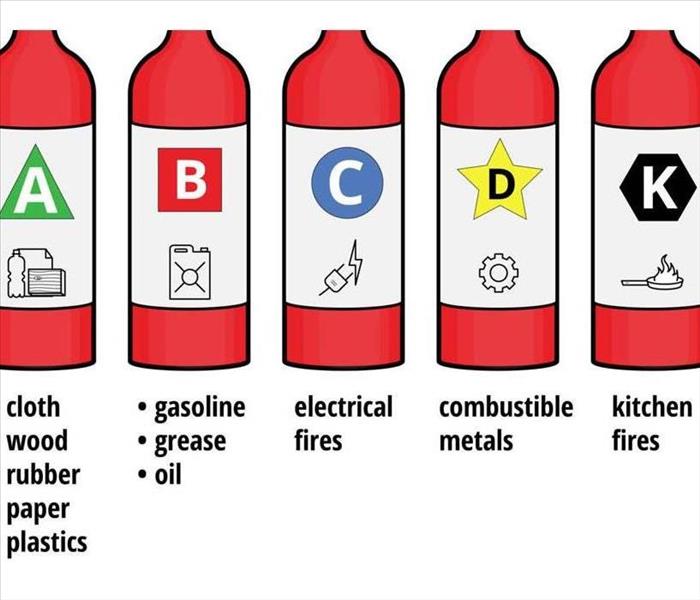Home Heating Safety
12/3/2019 (Permalink)
Throughout the winter months keeping a home warm is vital for homeowners. During the months of December, January, and February home heating fires are at a higher risk of occurring because of candle fires, electrical issues, and heating equipment. Stay safe and warm with some fire prevention tips below.
- Keep anything that can burn at least three feet away from a heating source such as a fireplace, wood stove, or a portable space heater.
- Never us an oven to heat your home.
- Remember to turn portable heaters off when leaving the home or going to bed.
- Make sure to have chimneys and heating equipment cleaned and inspected every year by a qualified professional.
- Test smoke and carbon monoxide detectors at least once every three months to ensure that they are working properly.
Thanksgiving Day Fire Facts
11/14/2019 (Permalink)
- Thanksgiving is the peak day for home cooking fires, followed by Christmas Day, Christmas Eve, and the day before Thanksgiving.
- In 2016, U.S. fire departments responded to an estimated 1,570 home cooking fires on Thanksgiving, the peak day for such fires.
- Unattended cooking was by far the leading contributing factor in cooking fires and fire deaths.
- Cooking equipment was involved in almost half of all reported home fires and home fire injuries, and it is the second leading cause of home fire deaths.
Additional Information can be found on the NFPA website at https://www.nfpa.org/Public-Education/Fire-causes-and-risks/Seasonal-fire-causes/Thanksgiving
October is National Fire Prevention Month
10/29/2019 (Permalink)
October is National Fire Prevention Month and at SERVPRO we want to bring awareness to the importance of fires safety and fire prevention. The month of October allows for the opportunity to educate the community on significant actions that can be taken to ensure the safety of the public. The Fire Prevention campaign for 2019 is, "Not Every Hero Wears a Cape. Plan and Practice Your Escape!" Which focuses on motivating families to plan and practice a home escape plan in the event of a fire. A fire escape drill that includes two ways out of every room and an outside meeting place is key. Making an action plan to get out of your home safely is critical to the prevention of a significant tragedy.
Escape Planning Tips from the NFPA Website
- MAKE a home escape plan. Draw a map of your home showing all doors and windows. Discuss the plan with everyone in your home.
- KNOW at least two ways out of every room, if possible. Make sure all doors and windows leading outside open easily.
- HAVE an outside meeting place (like a tree, light pole or mailbox) a safe distance from the home where everyone should meet.
- PRACTICE your home fire drill at night and during the day with everyone in your home, twice a year.
- PRACTICE using different ways out.
- TEACH children how to escape on their own in case you can’t help them.
- CLOSE doors behind you as you leave.
Links: https://www.nfpa.org/education
When and How to Use a Fire Extinguisher
10/29/2019 (Permalink)
Alongside Fire Prevention Month, at SERVPRO we strive to educate and provide information to our Mine Line community and customers on fire prevention all year round. Smoke and fire damage is something that is inevitable in the event that a fire occurs, but here at SERVPRO we are here to help. In the event of a small fire, here are some tips on choosing and using the correct fire extinguishers for each specific fire.
When to Use a Fire Extinguisher:
- Have I alerted others in the building that there’s a fire?
- Has someone called the fire department?
- Am I physically able to use a fire extinguisher?
- Is the fire small and contained in a single object (like a pan or a wastebasket)?
- Am I safe from the fire’s toxic smoke?
- Do I have a clear escape route?
Only when all the answers to the questions above are answered “yes’ use a fire extinguisher. If you are uncertain whether or not it is safe to use a fire extinguisher when answering the questions leave the building and immediately call 911.
Types of Fire Extinguishers:
- Type A is for the use of ordinary materials like cloth, wood, and paper.
- Type B is used on combustible and flammable liquids like grease, gasoline, oil and oil based paints.
- Type C is used with electrical equipment like appliances, tools, or other equipment that is plugged in.
- Type D is used with flammable metals
- Type K is used with vegetable oils, animal oils, and fats in cooking appliances.
While there are five different types of fire extinguishers, there are also multipurpose fire extinguishers. Extinguishers could be labeled “B-C” or “A-B-C” that cover a broader range of uses and can be found at improvement stores.
It is stated in the U.S. fire administration website for those who are operating a fire extinguisher to use the PASS method.
- Pull the pin. Hold the extinguisher with the nozzle pointing away from you and release the locking mechanism.
- Aim low. Point the extinguisher at the base of the fire.
- Squeeze the lever slowly and evenly.
- Sweep the nozzle from side-to-side.
Links: https://www.usfa.fema.gov/prevention/outreach/extinguishers.html

 24/7 Emergency Service
24/7 Emergency Service

